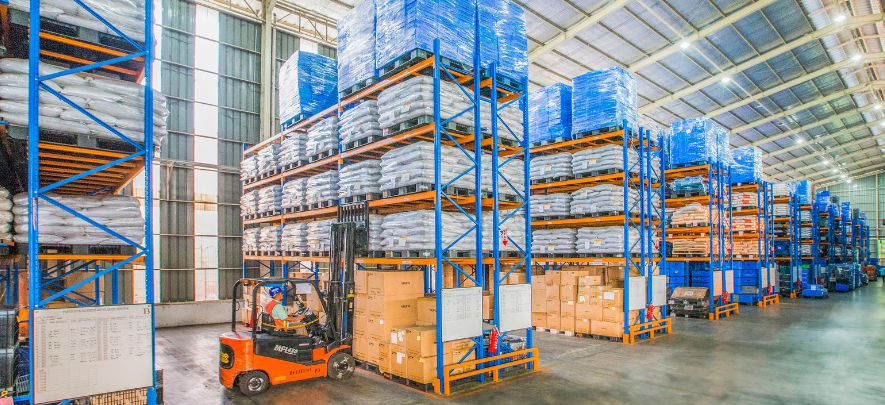Why You Should Implement a Warehouse Scanning System

Logistics & Supply Chain
113 week ago — 11 min read
A warehouse scanning system is a practical and effective investment for improving shipping, receiving, replenishing, picking, and packaging processes. By assigning a unique identity to each rack, container, or item, businesses can utilize barcoding and scanning systems to manage item transportation. You can easily track the movement of items between locations both inside and outside a warehouse.
A barcode inventory system lets you assign a unique barcode for each product. The barcode is scanned when a product is purchased, at which point data is transmitted to a central database.
When an item is chosen, a warehouse employee scans the barcode on the product. The scanner then notifies the employee if they chose the correct item. Once this happens, it logs the action in your inventory management system, which helps maintain stock levels. This technology enhances picking efficiency and accuracy while assisting you in maintaining real-time inventory tracking.
How a Warehouse Scanning System Works
Both hardware and software will be part of a barcode scanning system. The warehouse management system’s software tools can assist with picking, shipping, and other tasks. Your chosen software will also assist in helping you keep track of your inventory. Additionally, it can offer barcoding support.
The software is compatible with portable scanners. And it’s a boon since most companies use these devices. However, many modern smartphones are also capable of scanning barcodes easily. It can scan a product barcode to update your inventory. It can also guarantee that your staff members select the correct item for the order.
No matter the technology, a barcode scanning system will be useful for any warehouse.
Barcodes simply connect your inventory management system with the data collected during picking. Therefore, when the barcode is read, it notifies your inventory management system and the picker that the correct item has been selected. It’ll reflect the updated amount in your real-time inventory tracking.
There are two common types of barcodes being used in warehouses and businesses daily:
- 1D
- 2D
These are the kinds of barcodes most people are familiar with. They’re vertical black lines. The scanner then determines which product it is viewing by examining the spaces between the lines. It uses distinctive symbols and shapes in these barcodes. They have the benefit of being able to store more info per unit area. Great examples of 2D barcodes include QR codes or a PDF417 code.
There are numerous applications for the barcode scanner in your warehouse. It’s handy for storing inventory. Each scan updates your internal tracking systems and tells you how many products are on your shelves and their exact locations.
You’ll need to print barcodes for use in your warehouse quite frequently. Having a good barcode printer that connects to and integrates with your warehouse management system is essential.
5 Advantages of a Warehouse Scanning System
Moving bulk containers and individual products seamlessly through multiple distinct processes is essential for a warehouse’s efficiency. Using spreadsheets and manual entries to do inventory counts and other tasks can lead to more mistakes. It can also limit your staff’s ability to react rapidly to changes. You can label each rack, pallet, container, and position in a warehouse with a scannable barcode label at any time. It helps move goods between departments or locations and conducts semi-automated cycle counts.
1. Hassle-free Inventory Management
Goods are more likely to get lost in the flow of daily business when you have many products. When this occurs, you risk losing things, miscalculating product quantities, and messing up data counts. All of which can lead to one thing: financial loss.
You can avoid it by utilizing a warehouse scanning system. Using barcode technology and digital processes makes it easy to key in numbers and keep track of specific data. Since barcoding systems are always used with inventory management software, all the inventory data is readily available in the cloud. Since most scanning solutions sync data via Wi-Fi, every stock operation performed with the barcode scanner gets stored in your shared server.
2. Avoid Mispicks
People can become tired and restless, especially if they are busy. The same applies to your picking team. Your pickers can make mistakes no matter how fast or well-trained they are. Errors result in incorrect picks and the wrong goods sent to customers. Poor service can frustrate customers, and they can take their money somewhere else. This also causes additional expenses on your end. You’ll have to manage returns and deal with customer service.
When an item is selected using a barcode inventory system, the scanner ‘checks’ that it’s correct. This makes it simpler to choose the appropriate item regardless of how exhausted or busy your staff is.
3. Cost Effective
The potential savings easily outweigh the initial cost of installing and adopting a warehouse scanning system. Because of its contribution to superior inventory management, you can move products faster with fewer errors. Saving up on labor time through automated processes can also pay big dividends in the long run. Eliminating the need for complex paperwork is also something to consider.
4. Simple Set-Up
While barcoding your products can take time, setting up a complete barcode inventory system is easy. It can be hassle-free if you already have an existing set of SKUs. Barcodes simplify and streamline processes and best practices. Tasks that used to take hours, such as receiving, pulling orders, and putting up inventory, can now be done in minutes. Your job will be simpler, and we’ll be able to enhance the warehouse’s level of service. warehouse processes are easier to teach new personnel. Barcoding systems necessitate process standardization and discipline, which is very helpful for proper warehouse management.
5. Real-Time Product Tracking
Data can be instantly transmitted from digital barcode scanners to a cloud server or a computer. All stakeholders, from sales representatives to managers, can follow an item’s progress in real-time for the consumer’s benefit. It can also facilitate the removal of obstacles and bottlenecks without resulting in lengthy delays.
The most significant advantage is how real-time visibility can support supply chain management transparency. It results in the most precise and timely data capture so you can use your inventory and human resources more effectively.
Is Your Business Ready for a Warehouse Scanning System?
Before you go ahead and implement a barcode system for your warehouse, there are a couple of things you must keep in mind. You must choose one with features consistent with your warehouse’s functionality to meet your business goals.
The best barcode scanning solutions support precise data collection, effective workflows, and increased visibility in warehouse operations.
It’s best to equip your warehouse with a cloud-based warehouse management system. As mentioned, you can eliminate paper-based processes, improve accuracy, streamline data capture, and automate time-sensitive tasks with WMS.
You can guarantee accuracy while seamlessly capturing, tracking, and recording your inventory data in one place. This is accessible to your customers at the touch of a button.
Various scanning options cater to the multiple requirements of different products and industries. Every company has different needs. Therefore you should choose the best technology suited to your particular business or process. Managers should consider whether they will utilize laser or image scanning, the materials on which the barcodes will be printed, and the warehouse’s environmental conditions. The needs of warehouse workers are equally important when deciding which scanning technologies are most appropriate for a business.
When choosing a barcode scanner, you’ll also need to consider the type of connection it uses. Consider a wireless scanner if you employ a cloud-based inventory system and real-time data collection. You have two choices when choosing a wireless scanner: you can go with a scanner that transmits data over Wi-Fi or a device that transmits data over a mobile broadband connection. For teams that scan in a centralized location, like a warehouse, Wi-Fi scanners work best.
Set up the proper procedures to manage this new system once barcode labels have been created. This covers the processes for applying labels, updating data in your management system, and scanning items. Each item’s placement for the barcode label should be carefully thought out to prevent damage and facilitate scanning.
Warehouse scanning systems take the guesswork out of tracking inventory and assets. Improve your warehouse operations with the right barcoding and scanning systems.
Also read: Achieving Maximum Efficiency with Automation in Logistics
At GlobalLinker we believe that every small business has a big potential. So we provide the most powerful network, tools & resources to help you reach that potential. Build your store using our pre-created catalogues.
To explore business opportunities, link with me by clicking on the 'Connect' button on my eBiz Card.
Image Source: ZhenHub
Disclaimer: The views and opinions expressed in this article are those of the author and do not necessarily reflect the views, official policy, or position of GlobalLinker.
View Annie 's profile
Other articles written by Annie Tai
Most read this week











Comments
Share this content
Please login or Register to join the discussion